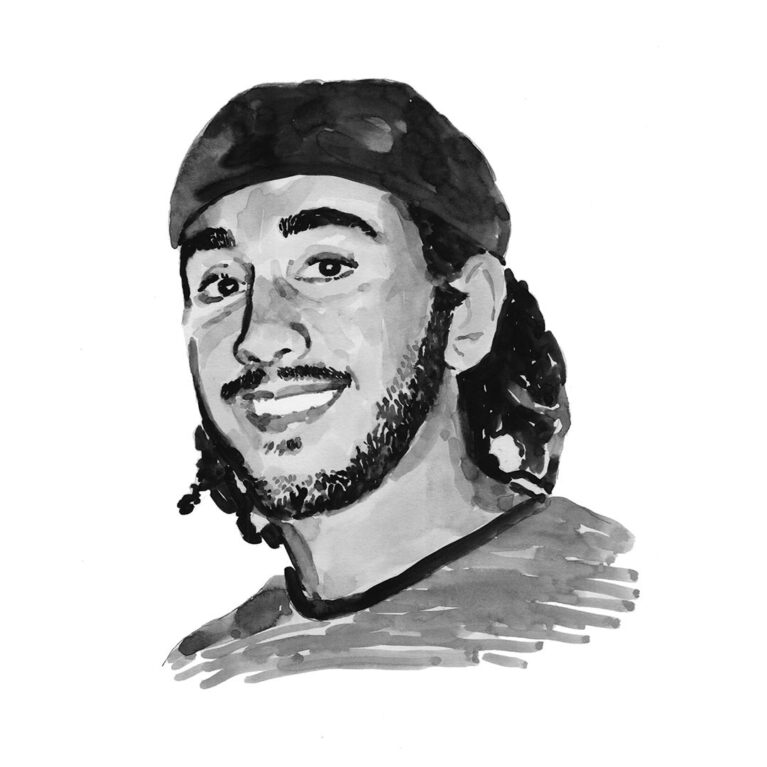Bryan Keller

Who I am
Animals have fascinated me since I was young. I remember gazing at sharks whenever I visited aquariums and I would sometimes ask questions that had yet to be answered. This motivated me to carry out research that would provide answers to my questions, as well as scientific insights into our friends in the sea. After earning my BSc from the University of Arizona I was able to begin my own research.
For my MSc I studied the social behaviour of lemon sharks at the Bimini Biological Field Station and then earned my PhD from Florida State University, where I studied the spatial ecology of the bonnethead shark. My initial fascination with the bonnethead had to do with the species’ migrations. These sharks migrate more than 1,000 kilometres (620 miles) each year, always returning to the same estuaries. How do they navigate successfully throughout these long-distance movements? We discovered that these bonnetheads use the earth’s magnetic field as a navigational aid. While working on my dissertation I also participated in research focusing on bycatch mitigation in pelagic longlines, post-release mortality of hammerheads and the recovery of the smalltooth sawfish.
I am currently conducting research with the non-profit Saving the Blue, where our mission is to recover and restore threatened marine species while connecting people to ocean wildlife. We also seek to promote green, sustainable living through education and outreach, both in person and online. Most notably, we focus on the conservation of imperilled species such as the smalltooth sawfish and great hammerhead and silky sharks. These species are of international concern and we hope to conduct research to aid in their global recovery.
Where I work
Andros, The Bahamas is often described as ‘the sleeping giant’, which makes sense when you consider that this island is larger than all the other islands of The Bahamas combined. Yet it is inhabited by only about 5,000 people. The sheer magnitude of Andros can only be fully appreciated from an aircraft: its mangroves are endless and blue holes unlimited. The diversity of shark species is also quite impressive. I greatly enjoy taking people to the island because they are often mesmerised by its beauty – and I can’t blame them. Each day Andros offers a new adventure, whether it’s seeking lemon sharks in the mangrove forests, scouting for eagle rays along the barrier reef or observing great hammerheads as they search the flats for their southern stingray prey. One of my favourite species, however, is one that is often overlooked in The Bahamas: the silky shark!
At Andros, the best place to find silky sharks is about 10 kilometres (six miles) from shore where the water is more than 1,000 metres (3,280 feet) deep. Here you will find a Navy buoy, which is a fantastic model for a fish aggregation device (FAD). Silky sharks appear here naturally and, unlike other species, they require no bait; apparently driven by curiosity, they seem to get as much pleasure from watching me swim as I do from watching them! If you ever have the chance to visit Andros and its silky sharks, I highly encourage you to take it.
What I do
We start each day by heading out to our study site, the Navy buoy – our FAD – about 10 kilometres offshore. Silky sharks are usually there to greet us and a couple of us will jump into the water to check if any of them have an external tag (it could indicate whether we have caught them in the past). After conducting a quick census, we return to the boat and begin fishing. Since the sharks are incredibly bold, it is easy to capture them. We quickly secure the shark alongside the boat, take some important measurements and then tag the animal with an acoustic transmitter.
Once the sharks have been tagged, our primary duty is to collect data. This is not as much fun as interacting with the sharks directly, but we visit each receiver in our array to download its data. These acoustic data can be used in a machine learning algorithm to infer social behaviour and associative preferences. We also use remote sensing data from satellites to obtain oceanographic data. Taken together, these data enable us to paint a picture of the conditions in the ocean that may affect aggregations and habitat use at the Navy buoy. This is so exciting to me because the buoy certainly holds some mysteries. On some days only a couple of silky sharks might be found aggregating at it, but occasionally there will be more than 40! This is an amazing sight, but our real interest lies in determining what drives this variation. If we can outline the factors that influence these aggregations, then perhaps we can contribute to the development of fisheries management measures to reduce the bycatch of this species near FADs, which could save countless silky sharks each year.
